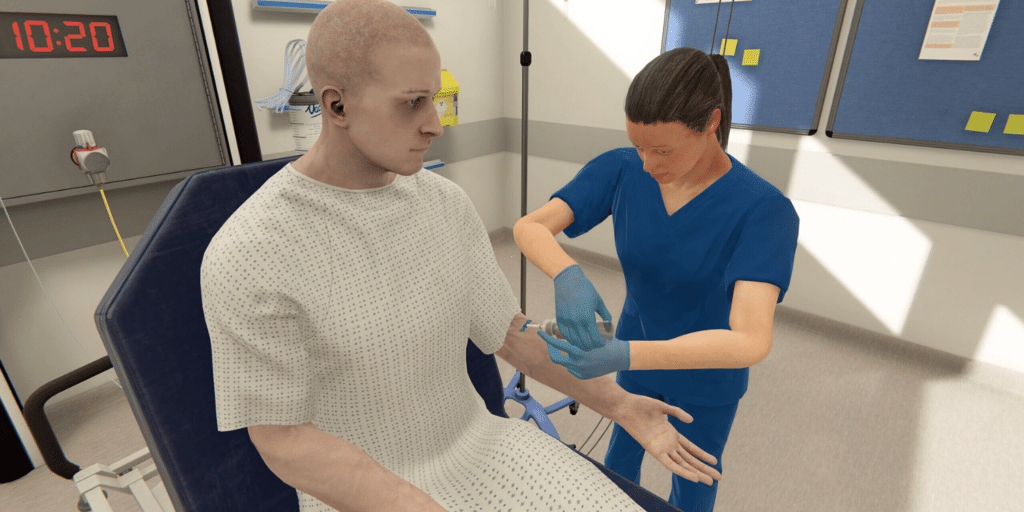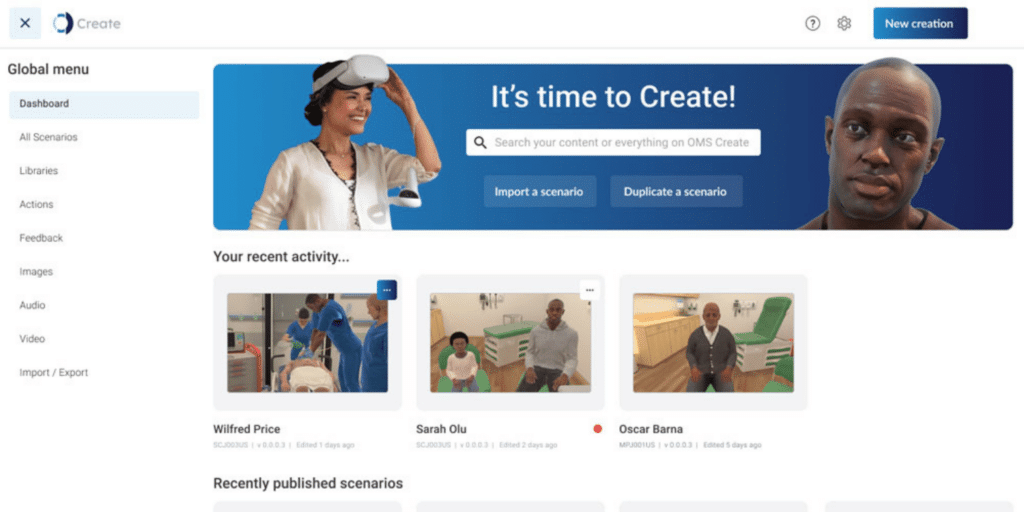In the United States, nursing turnover rates average a staggering 27%, and the healthcare system is facing a nursing shortage of up to 450,000 by 2025.
Additionally, recent data shows concerning rates of new graduate nurses’ readiness for practice, with 91% of those assessed landing outside of the acceptable range for competency of new nurses. This, compared to previous numbers of 77% in 2017, shows the seriousness of the situation and the need to prepare and support new grads as they begin their clinical practice.
Stamford Health, a non-profit independent patient care network in Connecticut, recently began using OMS as a means to address these growing national concerns in their nursing education and training program.
The Graduates Engaged, Mastering & Succeeding, or GEMS, program is designed to support and guide new nurses through a comprehensive orientation as they transition from schooling to practice.
Michelle Saglimbene, Stamford Health Simulation Manager, notes that “The use of virtual reality is The Center for Simulation and Learning’s approach to being innovative and connecting with our younger generation of nurses.”
These immersive VR simulations provide a psychologically safe environment for learners to practice, make mistakes, and correct errors in order to bolster confidence and clinical competence.

Saglimbene notes that benefits of implementing virtual reality into their training programs include “repeatable scenarios, cost-effective training options and a completely immersive learning experience”.
She went on to say that “Oxford Medical Simulation offers our learners the opportunity to hone critical thinking and clinical reasoning skills. In a completely safe, virtual environment, each learner can enter a virtual hospital room to interact with and care for a patient”.
Not only do these scenarios provide learners with the opportunity to practice their clinical skills in an interactive environment but, because they are grounded in evidence, they also provide robust feedback and analytics for the learner and trainer to review.
Evidence-based rationale is recorded for each unique encounter, providing a report of what went well and where there’s room for improvement. “Detailed reports of this nature,” Saglimbene notes, “allows the clinical educators to tailor the education to the needs of that specific learner”.
Looking ahead, institutions like Stamford Health can adapt existing scenarios or create custom scenarios themselves or using the no-code authoring platform, OMS Create.
OMS Create provides the freedom and flexibility for health systems to embed their own institutional protocols, cover specific objectives, and even build their own virtual onboarding programs – delivering any clinical training they need to in order to support the nursing workforce.

As Saglimbene states, “With each immersive experience, the nurse can review their performance, allowing clinical educators and the learner to collaborate and create an individualized, data-based learning plan to track performance. There are unlimited opportunities for learners to improve, using OMS”.
To learn more about how you can implement OMS for practitioner readiness, set up a time to chat with us here.
